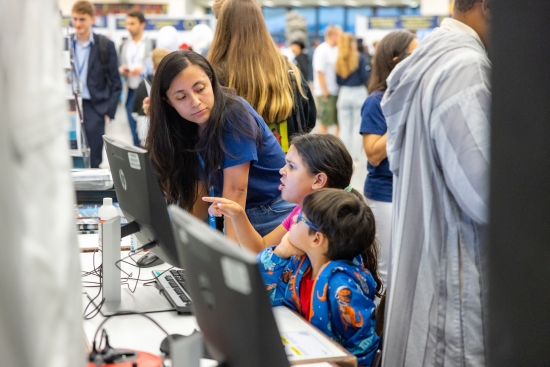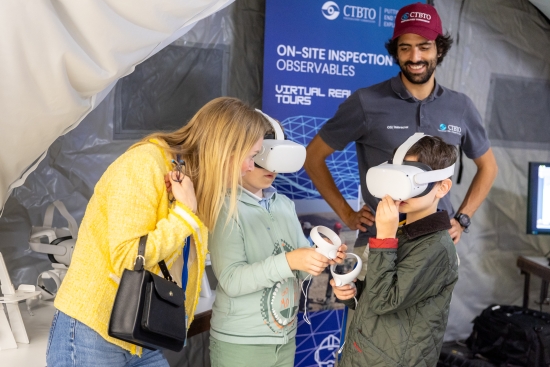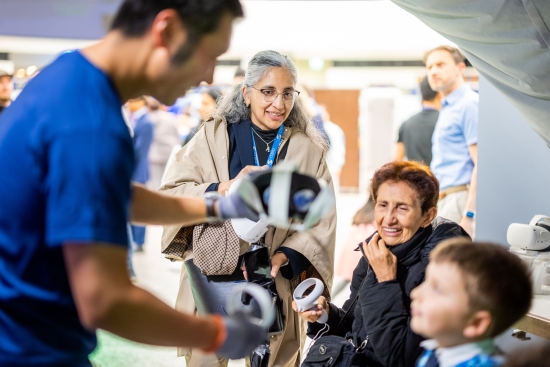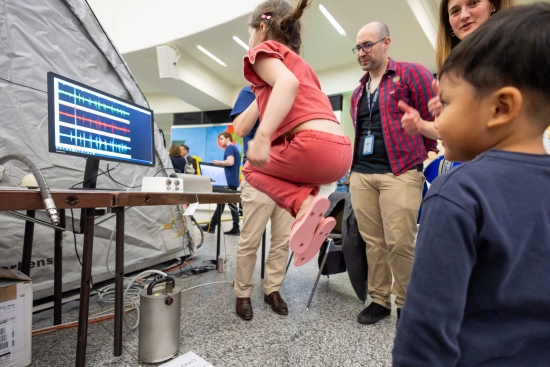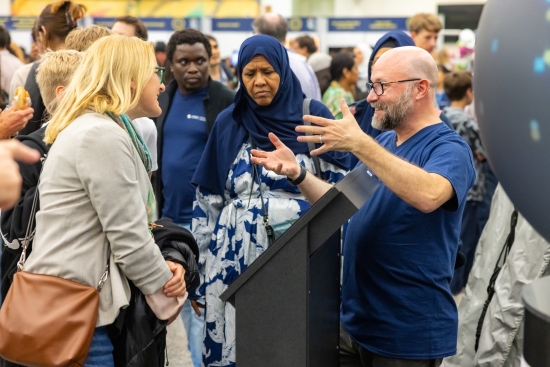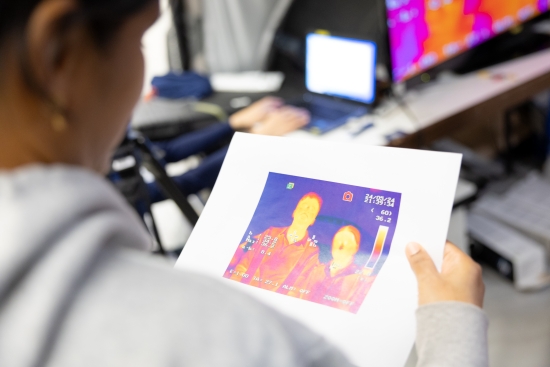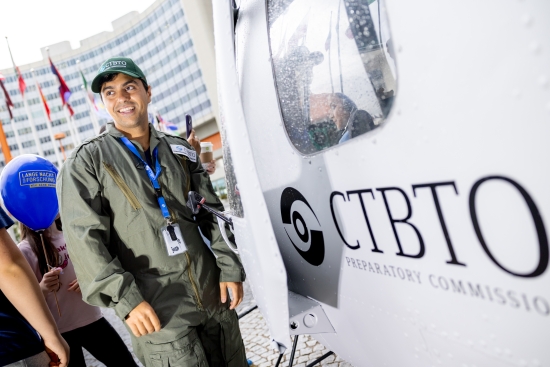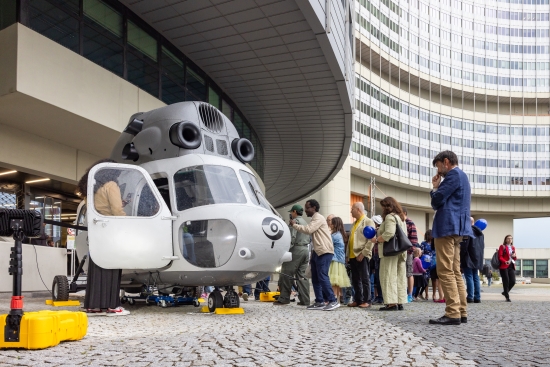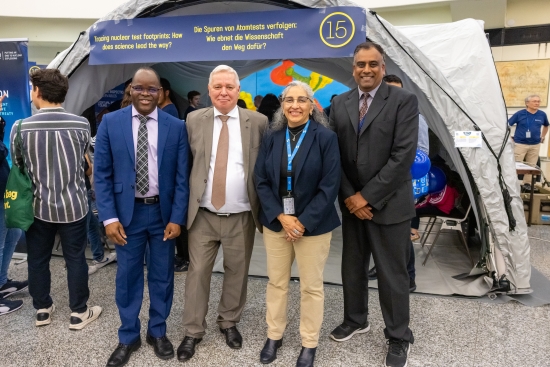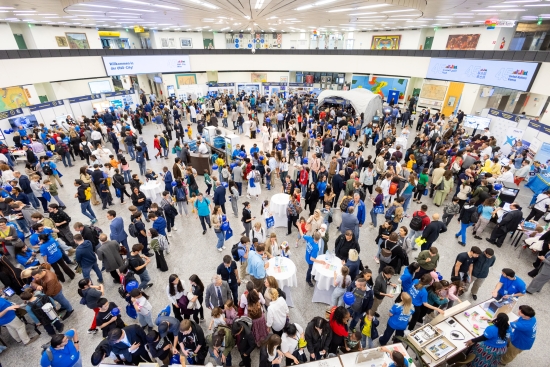Tracing nuclear test footprints: CTBTO highlights how science leads the way
The Comprehensive Nuclear-Test-Ban Treaty Organization (CTBTO) and other Vienna-based international organizations opened their doors to the public on Friday, 24 May for the Long Night of Research, known as Lange Nacht der Forschung in German, to showcase their work through interactive exhibits.
Speaking about the Austria-wide event, Executive Secretary Robert Floyd said: “Science and technology play a crucial role in our mission to ban nuclear testing, and the Long Night of Research provided a wonderful opportunity to engage with people of different backgrounds and age groups. I am very grateful to the CTBTO team, who put so much time, effort, and passion into this outreach.”
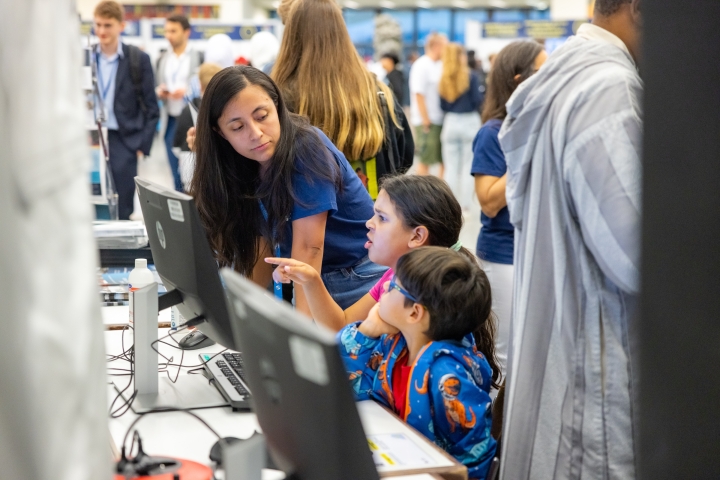
International Data Centre (IDC) staff showing children how data is analysed

Children using virtual reality goggles to take part in On-Site Inspection (OSI) tours
Over two dozen CTBTO staff members were on hand to answer questions and demonstrate the science and technology behind nuclear test detection.
The International Monitoring System (IMS) team displayed their state-of-the-art sensors used in a network of facilities that vigilantly monitor the planet for any signs of a nuclear test explosion. This system has proven its effectiveness by quickly and accurately detecting all the Democratic People’s Republic of Korea’s (DPRK) declared nuclear tests.
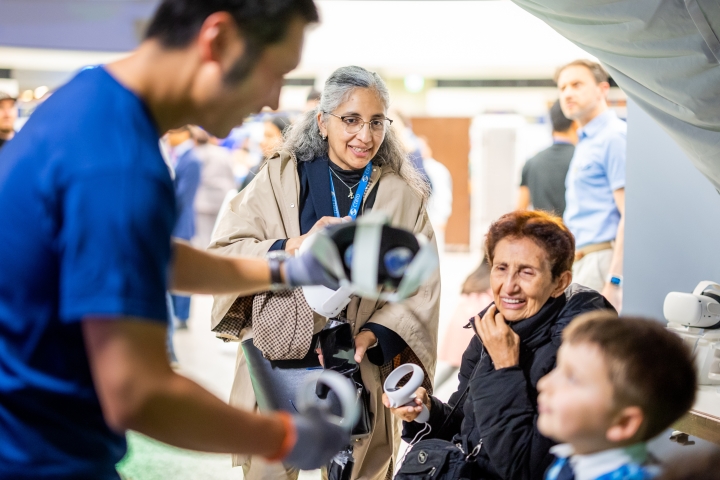
Visitors exploring OSI through virtual reality tours
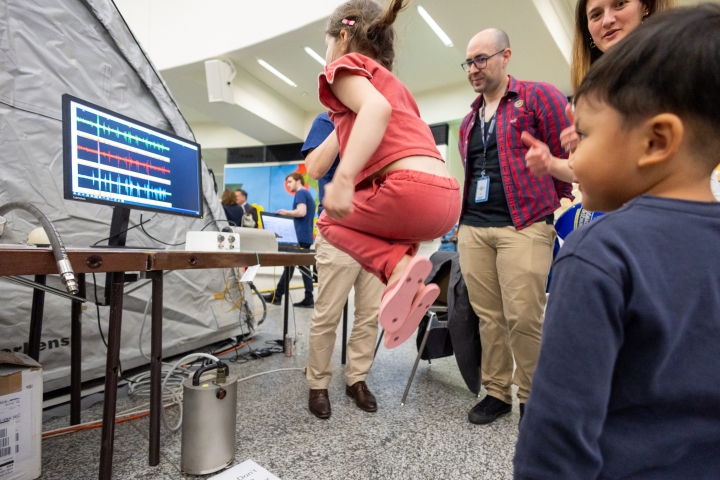
Child jumping to see seismic waves created at International Monitoring System (IMS) booth
Staff from the International Data Centre showcased the work of seismic, hydroacoustic, Infrasound, and radionuclide analysts. These experts perform crucial tasks to determine whether an explosion is natural, man-made, or indicative of a nuclear test.
On-Site Inspection (OSI) brought a crowd-pleaser to the event: a decommissioned Mi-2 helicopter now used as a flight simulator to train inspectors in overflight techniques. Positioned on the plaza of the Vienna International Centre (VIC), it attracted many visitors, who eagerly queued to sit in the aircraft, don headphones typically used for communication, and take photos.
They also provided participants with a unique opportunity to tinker with the same equipment used by surrogate inspectors on the ground. Visitors could try out handheld infrared cameras, which display temperature fluctuations that can indicate a potential underground nuclear test explosion. They were also given printouts of the imaging to take home as souvenirs.
A special guest appearance was made by the CTBTO’s robot dog, developed by Boston Dynamics. Its ability to navigate difficult terrain and hazardous environments, collect and transmit data, and assist inspectors by carrying equipment has made it a valuable part of the team.
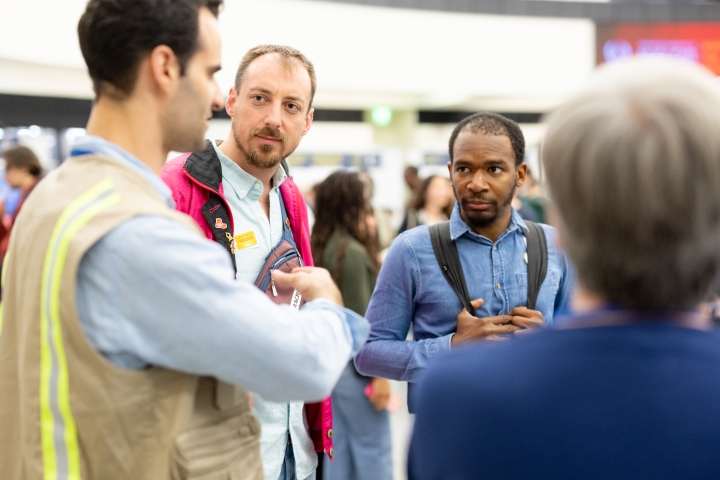
IMS staff speaking to members of public about work and mission of CTBTO

OSI’s robot dog at Vienna International Centre (VIC)
Peter Labak, OSI’s Chief of the Equipment and Implementation Section, said: “The title of the event is linked to the themes we cover in our work, and we can show the public how science can work for peace.”
More than 2,300 science enthusiasts of all ages attended the five-hour Long Night of Research at the VIC, which was one of over 200 locations across the country participating in the biennial event.
Visitors to CTBTO’s booth were invited to take part in a digital survey in English and German, with 84 percent of respondents reporting a good understanding of the Organization’s work after taking part in its interactive activities.
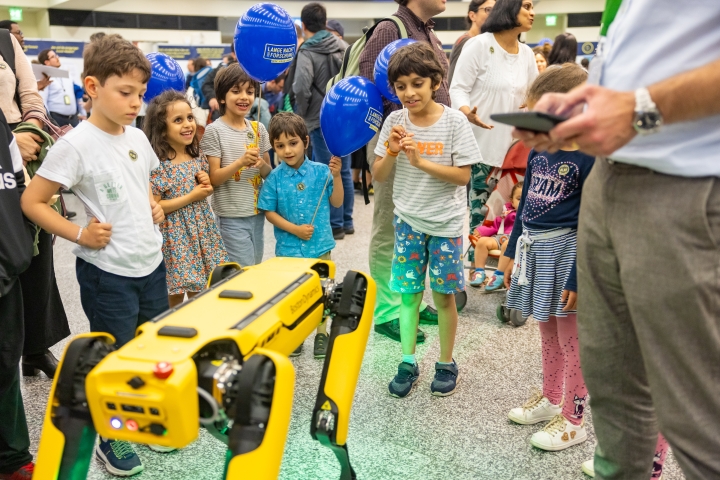
Children interacting with CTBTO’s robot dog

Public Information (PI) staff speaking to visitors using interactive OmniGlobe, which provides visual overview of CTBTO's IMS
One attendee, Maher from India, said: “This is an important event for children, the next generation, who don’t usually have access to such opportunities. My daughter queued for 40 minutes to experience the helicopter. That’s the most patient I’ve seen her in a while.”
“For me, it all started with the Big Bang Theory,” said 13-year-old Aarav. “I became interested in physics, and now I want to study quantum physics. I love this event because I can learn new things and expand my mind.”
Another visitor, Lukas from Germany, owner of a software startup, said: “I came here this evening not knowing anything about the CTBTO. After a few conversations with representatives from the different Divisions, I got a comprehensive picture of what goes into banning nuclear tests.”
27 May 2024

Print-out of image captured by infrared camera at CTBTO booth

OSI staff with helicopter simulator
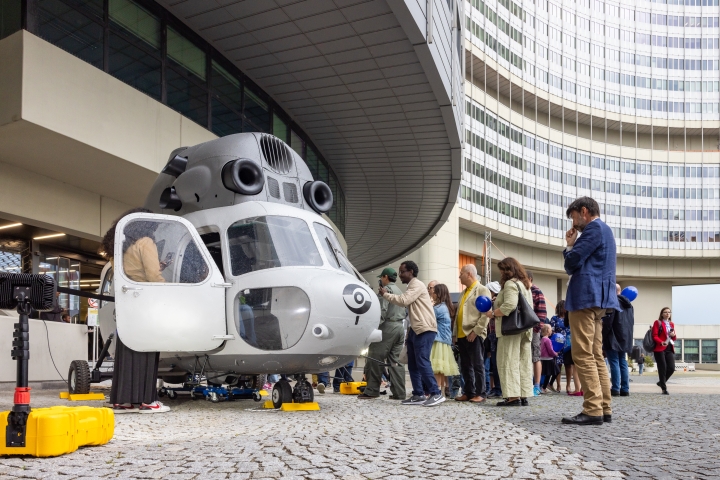
Visitors queueing to climb inside helicopter
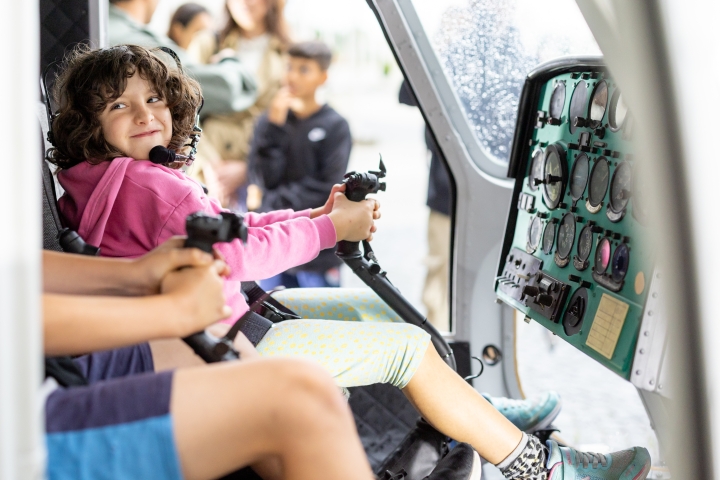
Child at wheel of OSI’s simulator helicopter
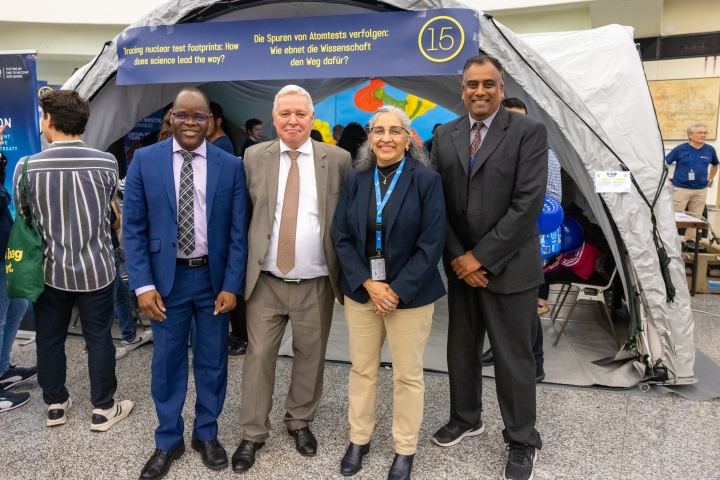
CTBTO Directors at Long Night of Research (Left to Right): Dounia Keda, IDC Division Director; Oleg Rozhkov, OSI Division Director; Xyoli Perez Campos, IMS Division Director; and Uday Dayal, Administration Division Director
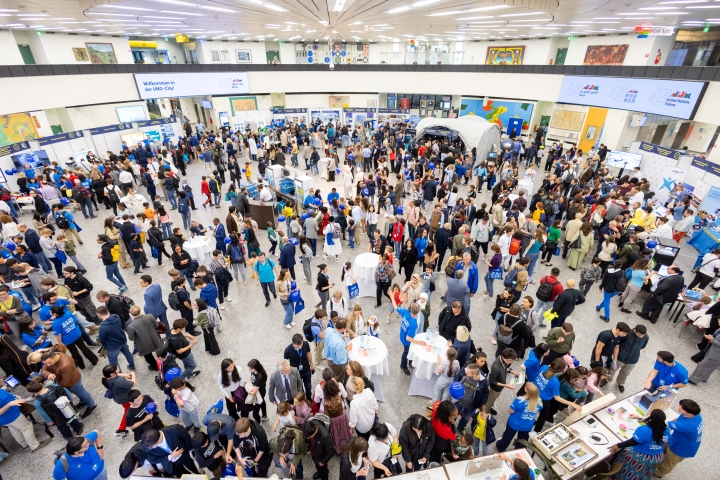
Overview of Rotunda, where Vienna-based international organizations showcase work to public
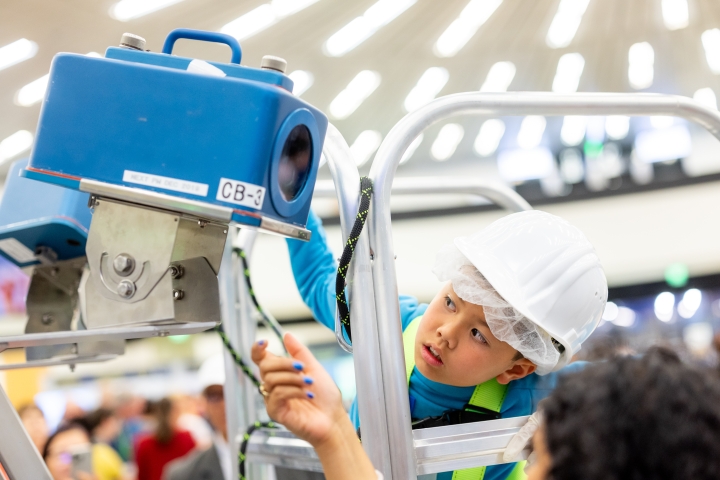
Child interacting with equipment at International Atomic Energy Agency (IAEA) booth

Children donning hazmat suits at IAEA booth

Close-up of protective gear at stand at Long Night of Research event

